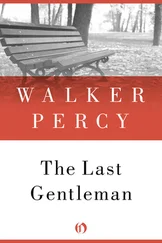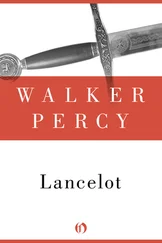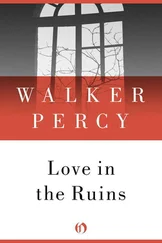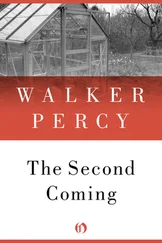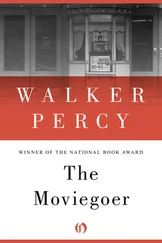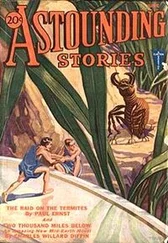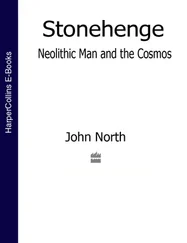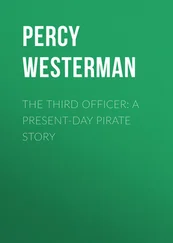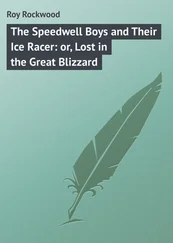Years pass. Kimberly and Tiffany were impregnated three times outward bound. Dr. Jane Smith refused sex on the first watch with the Captain. Her excuse: Somebody has to run the nursery. Her second excuse: We’re not married. Her third excuse: I’m married to someone else.
THE CAPTAIN: But we’re a year into the flight. Your husband is 123 years old, or dead.
DR. JANE SMITH: We can’t be sure.
THE CAPTAIN: But you signed the sexual access form.
DR. JANE SMITH: I lied.
THE CAPTAIN: Don’t you like me?
DR. JANE SMITH: Very much.
THE CAPTAIN: I like you very much. More than the others.
DR. JANE SMITH: I know — though you seem to like them well enough.
THE CAPTAIN: Good God. You’re jealous.
DR. JANE SMITH: Yes.
THE CAPTAIN: This is the first day of our second six-month watch together. Are we going to do crosswords and Great Books again? I love you.
DR. JANE SMITH: I know. Marry me.
THE CAPTAIN: Marry you! Why? How?
DR. JANE SMITH: You’re the captain. The captain of a ship can—
THE CAPTAIN: The captain of a ship cannot marry himself.
DR. JANE SMITH: Who says? You stand there, say the words, then move over here, give the response.
THE CAPTAIN: What words? I don’t have the book.
DR. JANE SMITH: I do.
THE CAPTAIN: Good Lord. What about the others?
DR. JANE SMITH: Don’t tell them.
So they were married. Dr. Jane Smith conceived and delivered herself of a son. She baptized him, not by pouring, sprinkling, or immersion — what with zero gravity — but with a squirt from the drinking tube.
The names of the first seven children were Krishna, Vishnu, Indira (out of Kimberly), Anna Freud, Oppie, Irene-Curie (out of Tiffany) and John (out of Dr. Jane Smith).
The “message” from Barnard’s Star turned out to be a false alarm, a non-message. It was no more than an interference effect from the powerful magnetic fields of the two Barnard planets, producing a complex pulsar transmission in the radio frequencies — much like two metronomes set at different speeds. Thus, where a single pulsar would go tick-tick-tick, this “message” went something like tock-tick-tock-tick-tick-tick-tock, a non-message fiendishly close to a message.
Barnard’s two planets were dead. They were also without oxygen and water and hence not colonizable.
More ominous than the bad news from Barnard was the bad news from home. Even as the ramjet approached the speed of light, it should have been overtaken by a few messages from earth. But after five years starship time — ninety years earth time — the messages ceased altogether.
Nevertheless, the crew took comfort. Any number of technical things could have gone wrong. After the disappointment at Barnard, everyone secretly looked forward to the return voyage after the great swing around the star when they should be running into a regular blizzard of outgoing messages from earth.
But earth was silent. Even after repeated queries: JPL, do you read? Do you read? Respond on any or all of designated frequencies —and even after five years of allowing for responses: silence.
Everyone knew what had happened. The Richardson survey, from his The Statistics of Deadly Quarrels, had proved all too reliable. The only unknown quantity was the magnitude of the final war. Was it an M10—the end of human life on the planet? an M9? an M5?
The long voyage home was like a dream. Five more children were born. Carl Jung out of Tiffany, Siddhartha and Chomsky out of Kimberly, Sarah and Mary Ann out of Dr. Jane Smith.
Other than the begetting, the care and feeding of infants, the education of children and teens, the adults were mostly silent — silent, until, as the starship neared earth, there came the inevitable speculation:
How bad is it? or was it? Even if it were an M10, 90 percent of the Cesium 137 radiation would have decayed after a hundred years. But the nitrogen in the upper atmosphere would have been oxidized, destroying significant amounts of ozone. The resulting solar ultraviolet effect would last for years. Birds would go blind — blind birds can’t find insects and so they die. Blind bees can’t pollinate plants. Would it be an earth swarming with locusts, seas teeming with blind fish? Even if there were survivors, how many would develop skin cancers? All the light-skinned? How would crops and microorganisms be affected?
But the favorite, the endless, the obsessive speculation of which they never tired:
Where will you go? What will you do? What about the children?
There was only one agreement. After eighteen years of living together in a space the size of a 727 fuselage, they were all thoroughly sick of each other and wanted to go their separate ways. With two exceptions.
THE CAPTAIN: Where do you want to go?
TIFFANY: I’m going to the coast of Oregon, where I once spent the summer doing anthropology with an Indian tribe. They were fishermen. They lived well and simply. It should be the safest spot in the U.S. from fallout. And the first are least likely to be contaminated by radiation or ultraviolet.
KIMBERLY: I want to go to Uxmal in the Yucatan. I have an idea about deciphering the glyphs. I lived there once in a pyramid next to a lovely deep cenote. I have a feeling that if anything has survived, it has.
THE CAPTAIN: What about your kids?
TIFFANY-AND-KIMBERLY: Oh, they all think they’re Jane’s anyhow.
THE CAPTAIN: What about you, Jane? Where do you want to go?
DR. JANE SMITH: Lost Cove, Tennessee. I was born there. It’s a tiny valley of the Cumberland plateau sealed off by a ridge. No roads, no phones, no TV. Only three farms and a cave. Good water, sweet white corn, quail, squirrel, deer, fish, wild pig. I haven’t had pork sausage, grits, and collards in twenty years. All projections of East-West fallout patterns missed it. I think I’ll take my chances.
THE CAPTAIN: Would you take the children?
DR. JANE SMITH: Sure. Can you fly us there?
THE CAPTAIN: Yes, but we have to land in Utah first.
DR. JANE SMITH: What will you do, Captain?
THE CAPTAIN: (Why didn’t she invite me to come with her to Tennessee?) I’m going back to Long Island. I don’t care what they’ve done to it. I’m getting in my ketch and sailing to Montauk.
DR. JANE SMITH (shyly) : Wouldn’t you rather come with me to Tennessee?
THE CAPTAIN: Yes.
The starship made two low orbits before landing at Bonneville: the first fly-by to see the Eastern Hemisphere by night; the second, the Western. Silently, like Lucifer in starlight, leaning on his great wings, they flew low over the dark northern continents.
London was dark. Europe was dark. Moscow was dark. China was dark. Japan was dark. San Francisco was dark. Chicago was dark. New York was dark.
At dawn on April 12, eighteen years after launch in starship time, 457 years in earth time, the starship Copernicus 4 set down on schedule on the salt flats at Bonneville, Utah, the captain landing at 190 knots as easily as an ancient airline pilot landing a 727. One does not forget how to ride a bicycle, swim, or fly an airplane.
After a long silence, the Captain requested an external radiation reading from Kimberly. Negative.
There was no one and nothing to be seen except the rusty shards of old steel maintenance sheds from the twenty-first century.
They stepped out into the sweet, heavy desert air. The problem was walking — but not for the children! Perhaps they were like the newborn of the Arctic tern who fly to the Dry Tortugas, never having been there before, yet land and know it for home.
Despite Dr. Jane Smith’s careful program of exercise and calcium maintenance, the adults were limber-legged as sailors and blind as bats in the dazzling Utah sun.
Читать дальше


